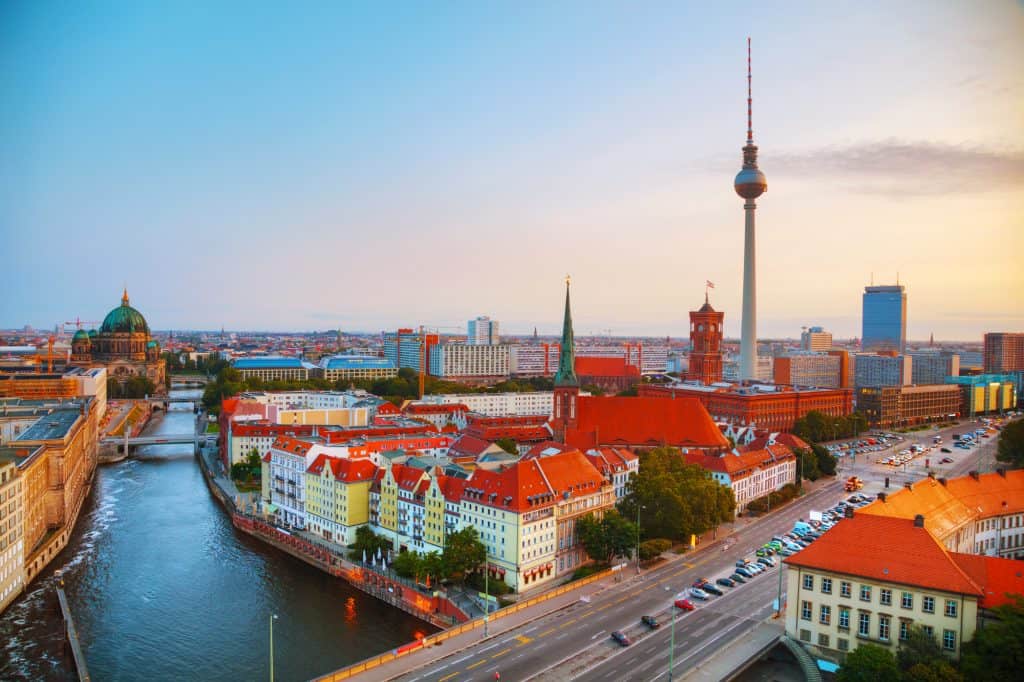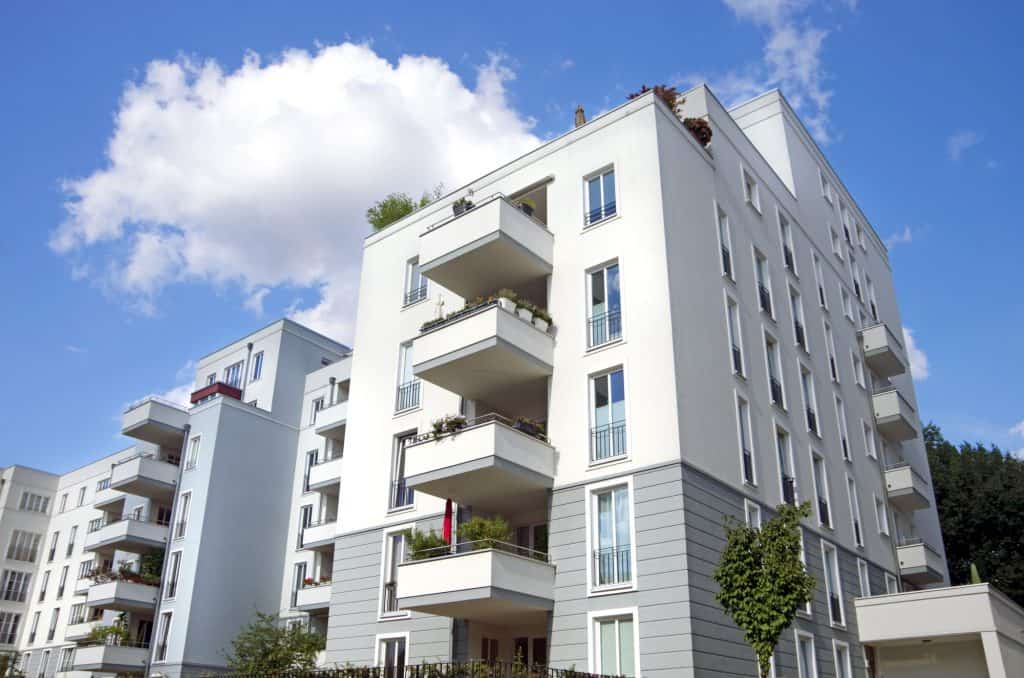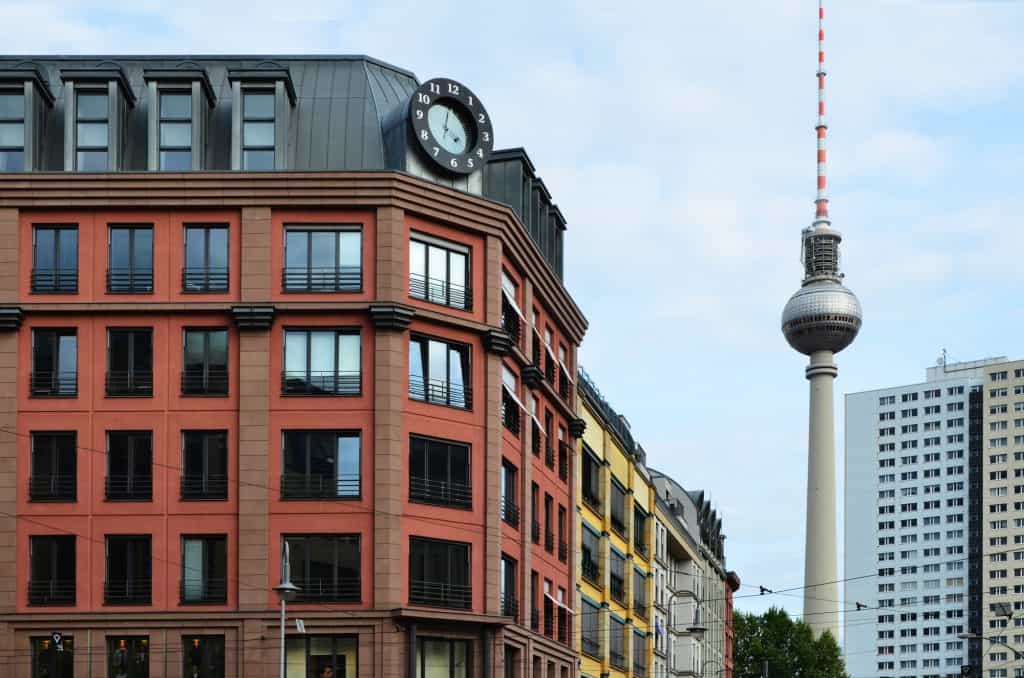Berlin has a total of 71 areas for preserving the composition of the residential population. These social conservation areas are often referred to in the media and in common parlance as milieu protection areas. In this article, we will take a closer look at how these areas affect owners, landlords and potential property buyers.
What are milieu protection areas (social conservation areas) and social conservation ordinances and what is their aim?
Anyone who owns a property in Berlin or is considering buying one will sooner or later stumble across the term “milieu protection area”. But what is behind such an area and what purpose does it serve?
When looking at the housing market in Berlin, it is noticeable that more and more modernization work has been carried out in recent years. Berlin’s city center has been particularly affected by these measures, which have been accompanied by a sharp rise in purchase and rental prices. It often happens that the actual residents of the apartments are no longer able to pay the high rents after the renovation work. They are forced to move out of the neighborhood, which greatly changes the social composition of Berlin’s neighborhoods.
Legislators are anything but satisfied with these changes, which is why Section 172 (1) No. 2 and (4) of the Building Code stipulates that in Berlin, a development plan can include bylaws to ensure the composition of the residential population. This is referred to as a milieu protection ordinance or, in legal terms, a social preservation ordinance. The aim is to maintain the composition of the residents in the area and prevent major changes. Population groups should not be driven out of their neighbourhood by price increases following modernization work. Of course, there will always be people who leave their traditional place of residence. However, the number should be so small that the general composition of the resident population does not change. Affordable housing should continue to be offered in the milieu protection areas in the future.
How is a milieu protection area (social conservation area) created?
In principle, any member of a political party, any member of the district council or any citizen can submit an application for conversion into a neighborhood protection area. The district council (BBV) decides which neighborhoods, districts or areas are to be designated as a “suspected area” and examined more closely in a preliminary investigation. However, it can be observed that the process is highly generalized. This can be illustrated by the example of Neukölln: The Left and Green parties called on the district office to carry out a rough screening to identify further potential milieu protection areas in this district. The focus should be on residential areas with a high proportion of rented housing. Excluding commercial and industrial areas, this includes around 100 percent of the Neukölln district.

As soon as the initial investigation confirms that the district is an area whose residential population composition is at risk, the district council adopts a resolution that the area in question must be investigated in more detail. As soon as this resolution is approved by the district council, applications for changes of use, structural changes and subdivisions can be postponed or even prohibited by the administration. This option can be found in Section 6 WEG and is valid for up to 12 months.
This is followed by an investigation which, on closer inspection, appears to be quite sweeping. Mainly external companies are commissioned to draw up an expert opinion on the extent to which the composition of the residential population in the area is at risk and should be protected. The investigation will be carried out by means of a neighborhood survey. As soon as the district council has received the results of the report, it will make a final decision on whether the requested area should be officially designated as a neighborhood protection area. If the assembly approves the request, the conservation ordinance is issued with an associated conservation statute. The ordinance becomes effective upon publication in the official gazette. From this point onwards, the districts can exercise their pre-emption rights.
How many milieu protection areas (social conservation areas) currently exist in Berlin?
There are currently 71 social conservation areas in Berlin that have been enacted by ordinance. These are located in the following districts of Berlin, among others:
- Center
- Friedrichshain-Kreuzberg
- Pankow
- Charlottenburg-Wilmersdorf
- Spandau
- Tempelhof-Schöneberg
- Neukölln
- Treptow-Köpenick
- Lichtenberg
- Reinickendorf
We will of course also provide you with a comprehensive list:
- Gierkeplatz
- Mierendorff Island
- Weber meadow
- Boxhagener Platz
- Bergmannstrasse-North
- Chamissoplatz
- Graeferstrasse
- Hornstrasse (and extension)
- Luisenstadt
- Petersburger Straße
- Kreuzberg-North
- Kaskelstrasse
- Weitlingenstraße
- Seestraße
- Sparrplatz
- Leopoldplatz
- Forest road
- Birch Street
- Humboldthain North-West
- Kattegat road
- Reiniekendorfer-Straße
- Soldiner Strasse
- Thomasiusstrasse
- Tiergarten-South
- Reuterplatz
- Schiller Promenade
- Rixdorf
- Flughafenstraße/Donaustraße
- Körnerpark
- Hertzbergplatz/Treptower Straße
- Silbersteinstraße/Glasgower Straße
- Falkplatz
- Teutoburger Platz
- Kollwitzplatz
- Helmholtzplatz
- Bötzowstraße
- Winsstrasse
- Arnimplatz
- Pankow center
- Humannplatz
- Ostseestraße/Grellstraße
- Langhansstrasse
- Composers’ Quarter
- Pankow-South
- Letteplatz
- Schöneberg Island
- Barbarossaplatz/Bayerischer Platz
- Bautzener Straße
- Kaiser-Wilhelm-Platz
- Grazer Platz
- Schöneberg North
- Schöneberg South
- Tempelhof
- Old Treptow
- Niederschöneweide
- Oberschönerweide
- Alexanderplatz district
- Stralauer Kiez
- Klausenerplatz
- Britz
- Germaniapromenade
- Spandau Altstadt/Neustadt
- Wilhelmstadt
- Gropiusstadt
- Old Lietzow
- Jungfernheide
- Karl-August-Platz
- Richard-Wagner-Straße
- Danziger Strasse East
- Fanningerstrasse
- Scharnweberstrasse

What other conservation goals are there?
Section 172 et seq. of the Building Code sets out the objectives of the preservation statutes. Overall, there is not only the desire to preserve the composition of the residential population of neighborhoods, but also other preservation goals.
- The urban character of the area is to be preserved, which is why the urban design is not to be changed.
- The composition of the resident population should be maintained.
- Urban restructuring
Important for owners: Legal aspects and building regulations in protected neighborhoods (social conservation areas)
Owners are particularly affected by milieu protection. If they want to renovate or refurbish their condominiums, they have to comply with a large number of building regulations. In the following, we analyze what these are and what legal aspects you are subject to as the owner of a property in a Berlin milieu protection area:
The right of first refusal and averting agreements in milieu protection areas
If a property is located in a social conservation area, the district has a right of first refusal. This can be found in § 24 Para. 1 Sentence 1 No. 4 of the Building Code. If a property is to be sold, the district must be informed of this. It has two months to make use of its pre-emptive right itself or to transfer the pre-emptive right to a third party. This is preferably one of the municipal housing associations in Berlin, of which there are six in total.
If a person is interested in buying a property, they can cancel or avert the district’s right of first refusal by signing an averting agreement. In this agreement, the buyer undertakes to comply with the requirements imposed by the district to preserve the protected neighborhood. This agreement often stipulates, for example, that the buyer of a property will refrain from combining several apartments and will not carry out certain modernization measures.
The conversion ordinance for social conservation areas
The conversion ordinance came into force in Berlin on March 14, 2015. It stipulates that there is a reservation of approval for the conversion of rental apartments into condominiums in milieu protection areas. Approval for the conversion of an apartment is usually only granted if the owner of the property undertakes to only sell the condominium to the tenants living in the apartment for a period of seven years. This greatly reduces the economic usability of a condominium.
Measures requiring approval in milieu protection areas
In neighborhood protection areas, a number of changes that can be made to an apartment must be approved. These include the use of the apartment. As already described, the conversion of a rented apartment into a condominium is only approved subject to certain conditions. There are also modernizations, structural changes, demolitions and conversions.
Whether or not a project is approved by the district depends on the individual negotiations with the responsible department, as well as on the district’s policy. A measure can be approved after personal negotiations, for example, if only a fraction of the costs of the modernization are passed on to the tenants of the property.
Under normal circumstances, work that adapts the property to modern living standards is also eligible for approval. This includes, for example, the installation of legally required thermal insulation, the installation of an elevator, the installation of insulated windows or a fitted kitchen, as well as the first-time addition of a balcony, provided that the usable area does not exceed five square meters.
However, modernization measures that are not considered necessary and are referred to as luxury renovations are not eligible for approval. These include, for example, the installation of a guest bathroom, changes to the floor plan of the property, the installation of underfloor heating, the merging of apartments, the installation of a conservatory, a loggia or a terrace, as well as changes of use of the rented apartment and conversion to a commercial property or a vacation apartment.
How does the approval procedure for modernization measures work for apartments in protected neighborhoods?
If the approval process runs smoothly, the following three steps must be completed:
- The developer or owner of a property informs the district office about the planned modernization measures
This is usually done in person during the on-site consultation or via a telephone call. During the meeting with the district office, you will find out whether the project as a whole requires an application. This consultation can also provide information on whether the project is feasible or whether adjustments need to be made in order to meet the criteria for approval. - The application for a conservation permit is submitted
The person in charge will inform you about the documents you need to apply for a permit. The tenant advisory service of the district office will then inform the tenants of the property about the application you have submitted. - The district office will check the application, which must be submitted in full, within one month.
First of all, the district office will check whether you have submitted all the required documents completely and correctly. It then analyzes whether any changes need to be made to the application. This happens, for example, if your modernization project cannot be approved or can only be approved in part.

Effects on the termination for personal use
Under normal circumstances, it is common for a homeowner to give notice to their tenant in order to register their own requirements. However, it is more difficult to terminate a tenant’s personal use of a property that is located in a milieu protection area. The district stipulates that the living conditions must not change in order to maintain the social area. If the owner of an apartment wishes to give notice to the tenant in order to use the apartment himself, this wish must be compatible with the conservation ordinance in order to be enforced.
The owner is obliged to state the reasons for the termination and the request for personal use in the termination letter. If the tenant objects, the court must examine the reasons for the application for personal use in detail.
If a conservation statute has been issued for the area in which the property is located, it may be more difficult to terminate the tenancy. In the case of a conservation statute in accordance with Section 172 (1) No. 2 or No. 3 of the German Building Code, the condominium owner must adapt their intended use to the objectives of the statute. Explicit official approval must be obtained for certain changes of use or planned conversions. The district checks whether the owner of the property can even realize his or her wish for owner-occupation. If the owner of the apartment is unable to convincingly demonstrate that his or her wishes for owner-occupation can be reconciled with the requirements of the conservation statutes, the district court may reject the termination.
Conclusion
Milieu protection has been in place in Berlin for over 20 years now. The first areas included neighborhoods and streets in the districts of Berlin Tiergarten and Kreuzberg. Parts of Pankow and Berlin Mitte were added. Milieu protection is declared if there are fears that the composition of the neighborhood’s resident population could change significantly. It is also granted if the cityscape is changed by frequent modernization work.
Nevertheless, it can be observed that it is mainly high-income households that live in many of Berlin’s milieu protection areas. Rents are often above the average for the Berlin housing market. The success of social preservation measures is therefore not certain. Part of the problem seems to be that there are still large areas in Berlin that are not subject to any protection. In these areas, building applications are approved and facades are altered without any special requirements having to be met. This contributes to the fact that the composition of Berlin’s residential population continues to change significantly. The same applies to the cityscape, as the modernization measures being carried out in many districts of the German capital cannot be reconciled with the actual intentions of milieu protection. New construction projects, which are springing up in numerous places, stand out clearly from the old buildings of the Wilhelminian era and change the image of Berlin’s neighborhoods. This is why some politicians are calling for comprehensive neighborhood protection for Berlin.



